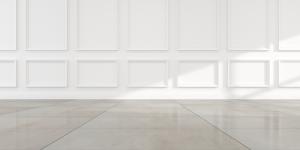Enduring Elegance: Wood and Tile Flooring that Withstand Louisiana’s Humidity
Engineered woods provide the visual appeal of hardwoods with added stability, making them a smart choice for flooring in our humid climate.”
NEW ORLEANS, LOUISIANA, UNITED STATES, November 23, 2023 /EINPresswire.com/ -- In Louisiana, the climate dictates a lifestyle that is in harmony with both the beauty and challenges of its environment. One such challenge is the high humidity that permeates the air, impacting every aspect of construction and home design, especially flooring. In this unique setting, the choice of flooring material becomes not just a matter of aesthetic preference but also of practicality and durability. Among the myriad of options, wood and tile stand out for their ability to weather the moisture-heavy atmosphere while offering homeowners and designers a range of styles and finishes.— Brett Harris
Tile Flooring: The Classic Choice
Tile flooring has long been revered for its resilience and ease of maintenance, making it a quintessential choice for humid climates like Louisiana's. Ceramic and porcelain tiles, in particular, are non-porous, which means they do not absorb moisture. This characteristic makes them immune to the warping and swelling that plague more absorbent materials. The innate water resistance of tile ensures that it remains undistorted, unaffected by the high humidity that can cause other flooring materials to deteriorate over time.
The versatility of tile is evident in its wide range of styles, colors, and textures. Glazed ceramic and porcelain tiles offer a protective layer that stands up to excessive moisture and staining. For a natural stone look, porcelain tiles are available that mimic the appearance of marble, slate, and other stones, providing the aesthetic of natural stone without the same level of maintenance or moisture sensitivity.
Wood Flooring: The Natural Warmth
Wood flooring brings warmth and character to any space, but in a humid environment, the selection of wood flooring must be approached with care. Solid hardwoods are traditionally susceptible to the effects of moisture, leading to expansion and contraction that can cause buckling or gaps. However, certain types of wood and engineered wood products have been crafted to overcome these challenges, making them suitable for humid climates.
Among solid woods, teak and cedar are known for their natural oils, which help to repel moisture, making them less prone to the effects of humidity. These woods are often used in settings where moisture is a constant factor, such as in outdoor furniture or boats, and bring this same resilience to flooring in Louisiana’s homes.
Engineered wood flooring offers an alternative that is specifically designed for better performance in variable climates. Constructed in layers, engineered wood combines a top layer of hardwood with a core of plywood or high-density fiberboard. This construction method minimizes the wood’s natural tendency to change with fluctuations in humidity. Brett Harris, the owner of Builders Direct Floorworx, shares, “Engineered woods provide the visual appeal of hardwoods with added stability, making them a smart choice for flooring in our humid climate.”
The finish applied to wood flooring also plays a critical role in its ability to withstand humidity. High-quality polyurethane finishes seal the wood, creating a barrier against moisture. Regular maintenance, including keeping the wood clean and dry, will further protect the flooring from the humid air.
Combining Beauty and Durability
The aesthetics of wood and tile can be combined to create flooring that is both beautiful and functional. Tile can be used in areas of the home that are prone to direct contact with water, such as bathrooms and kitchens, while engineered wood can provide the desired look of hardwood in living areas where comfort and style are priorities.
In Louisiana, where the humidity is as much a part of the state as the rich culture and history, homes and buildings require flooring that can maintain its form and function despite the moisture-laden air. Tile offers a durable and water-resistant option with a wide range of stylistic choices, while engineered wood flooring provides the timeless appeal of hardwood without the susceptibility to the effects of humidity.
Adapting to the Climate
Residents of Louisiana have long adapted their homes and lifestyles to the subtropical climate. In modern times, this adaptation includes choosing building materials that can handle the humidity while providing the comfort and design that homeowners desire. Tile and engineered wood flooring represent some of the best options available, combining technological advancements with natural properties to create flooring that lasts.
In the search for flooring that can handle Louisiana’s humidity, homeowners and builders alike will find that the market offers options that can meet this need without compromising on style. With the proper selection of wood or tile, Louisiana’s homes can embody both the state’s elegance and its resilience, standing up to the climate while offering a foundation of beauty and durability.
Conclusion
Selecting the right flooring is critical in Louisiana’s humid climate, and the choice often comes down to finding the perfect balance between functionality and aesthetics. Both wood and tile flooring offer solutions that meet these needs, providing the resilience required to withstand the moisture while delivering the visual appeal homeowners seek. From the timeless charm of tile to the natural allure of wood, the floors of Louisiana’s homes can be as enduring as they are elegant, a true reflection of the state’s spirit of resilience and grace.
Morgan Thomas
Rhino Digital, LLC
+1 504-875-5036
email us here
Visit us on social media:
Facebook
Legal Disclaimer:
EIN Presswire provides this news content "as is" without warranty of any kind. We do not accept any responsibility or liability for the accuracy, content, images, videos, licenses, completeness, legality, or reliability of the information contained in this article. If you have any complaints or copyright issues related to this article, kindly contact the author above.


